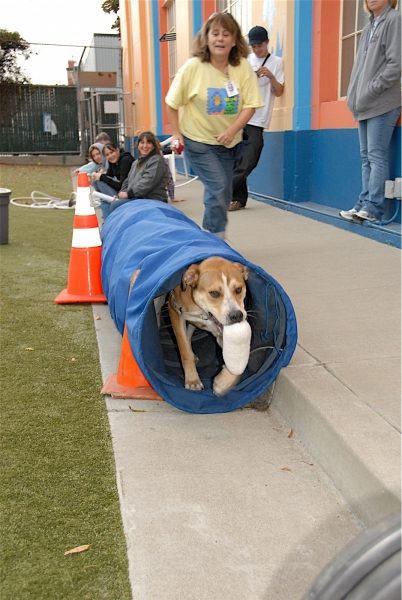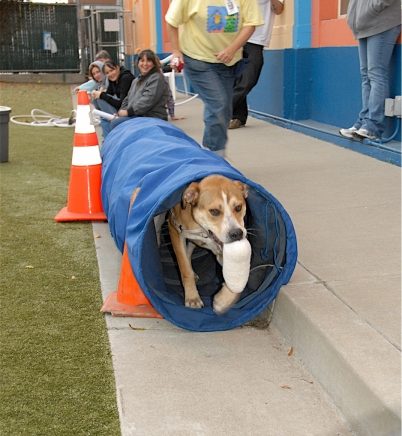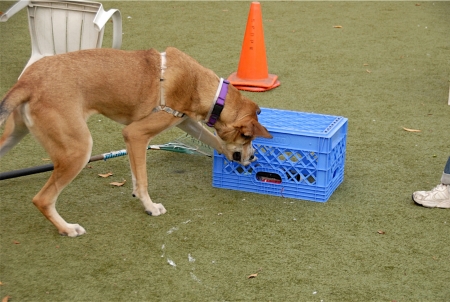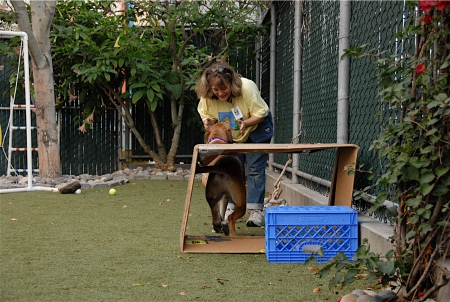

Cheap objects + creativity = happy shelter dogs
Scraping up funds to do anything beyond the bare minimum tends to be next to impossible at shelters, which rarely receive government funding. Crumbling facilities held together with duct tape and string is the norm.
For an invisible segment of a shelter’s population – the custody dogs – the resources available are even more scant. These animals, tucked away from public view, will sit in custody for months, even years, waiting for trials to conclude that, in some cases, will decide if they are allowed to live or die. These victims of neglect and cruelty slowly go mad behind bars, caged up with no stimulus to engage their natural instincts.
In a previous post I wrote about Corinne Dowling’s program called Give a Dog a Bone, which is operated through San Francisco’s Animal Care and Control (Oct. 1, A bone for the dogs behind the green door).
Finding ways to help these forgotten animals is challenging. When I sat down with Corinne this month, I was impressed with her creative thinking. She has honed her ability to make a play space out of basic household materials, bringing boundless joy to many animals in the process. Using common objects like brooms strung between plastic lawn chairs, milk crates, and cardboard boxes, she stimulates natural behaviors such as engaging a dog’s prey drive. And her approach isn’t limited to custody dogs – it could be applied to animals in any shelter.
“Even if your shelter is in a double-wide trailer, even if you have no money, you can still use things you’ve got lying around,” Corinne says. “Look around and see what you have.”
Check out a recent play date in the yard behind Animal Care and Control in San Francisco.

A milk crate food puzzle engages the prey drive of this curious dog.

Corinne motivates a dog to gain confidence by conquering a cardboard box.
Photos in this post courtesy of Sylvia Spiro of Vision Captured.
Join the newsletter and never miss out on dog content again!
"*" indicates required fields
By clicking the arrow, you agree to our web Terms of Use and Privacy & Cookie Policy. Easy unsubscribe links are provided in every email.